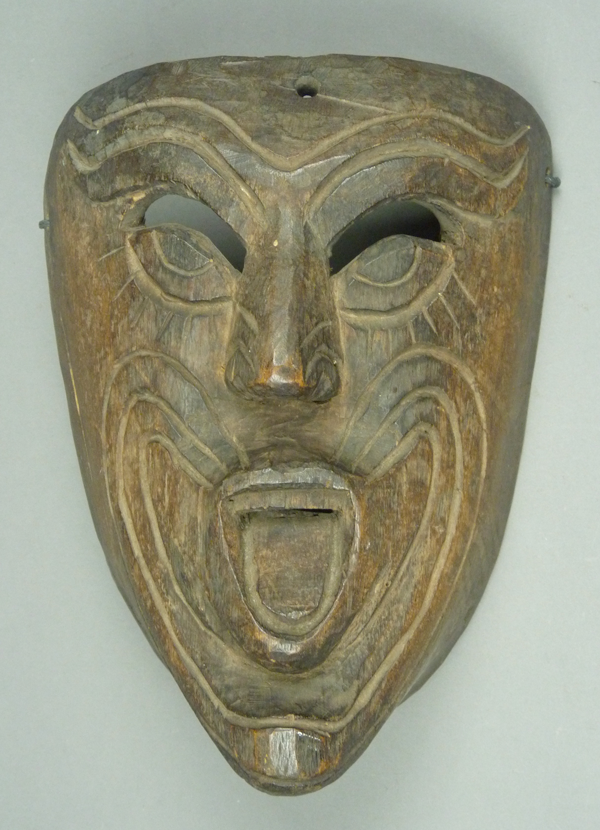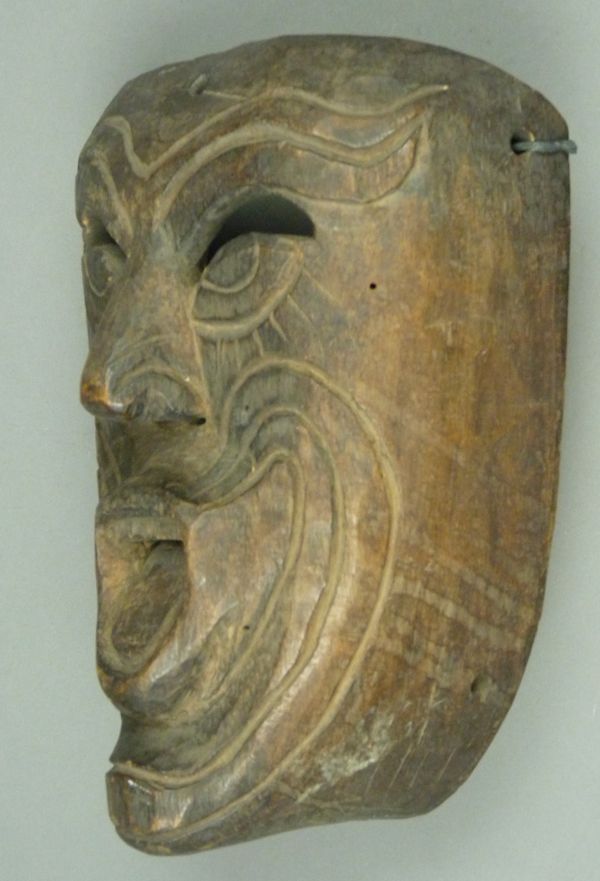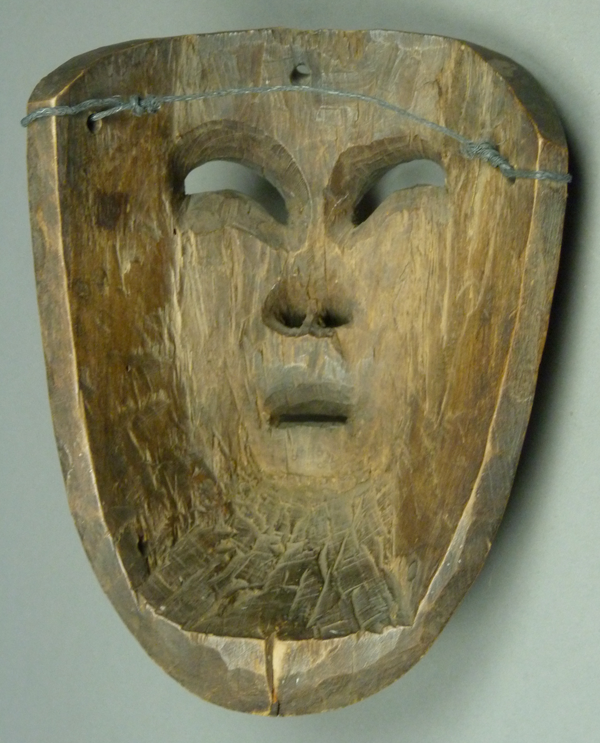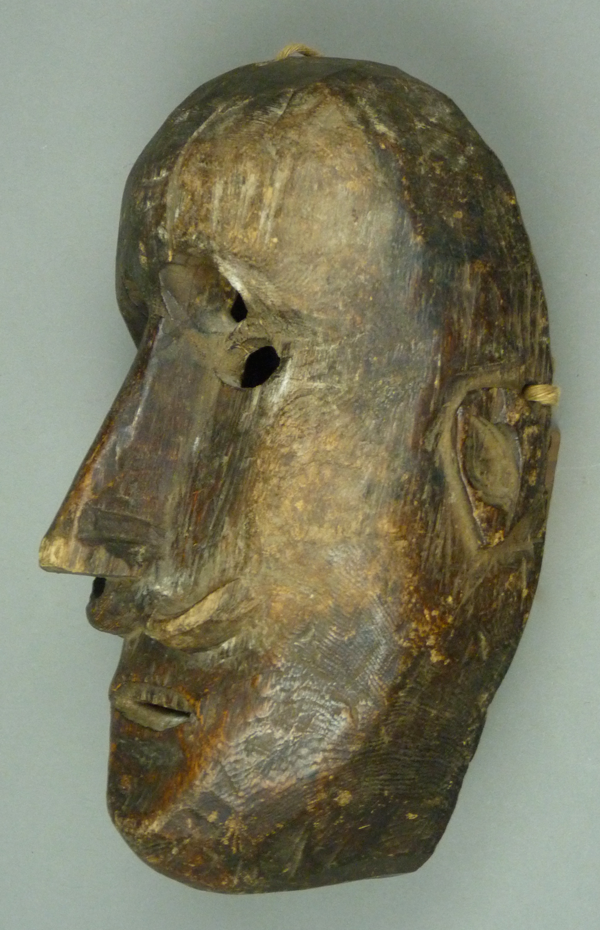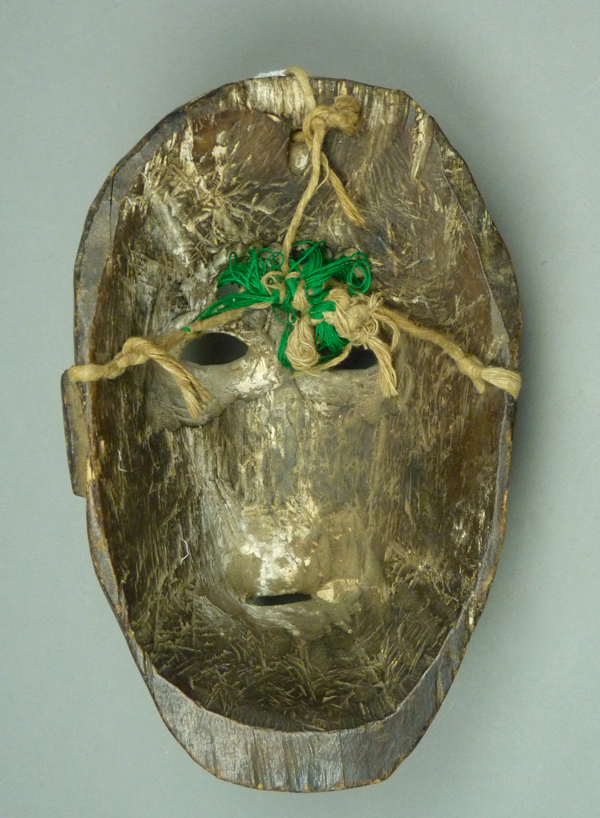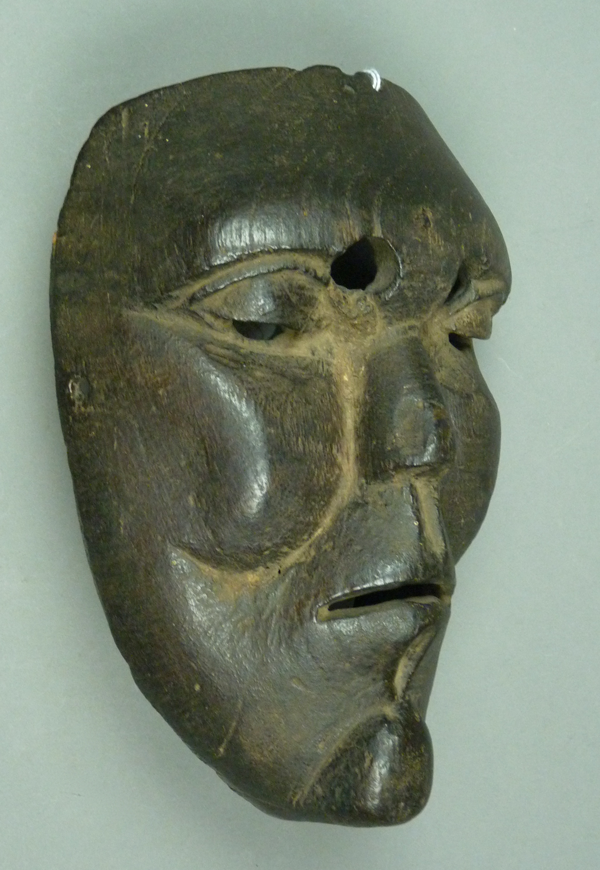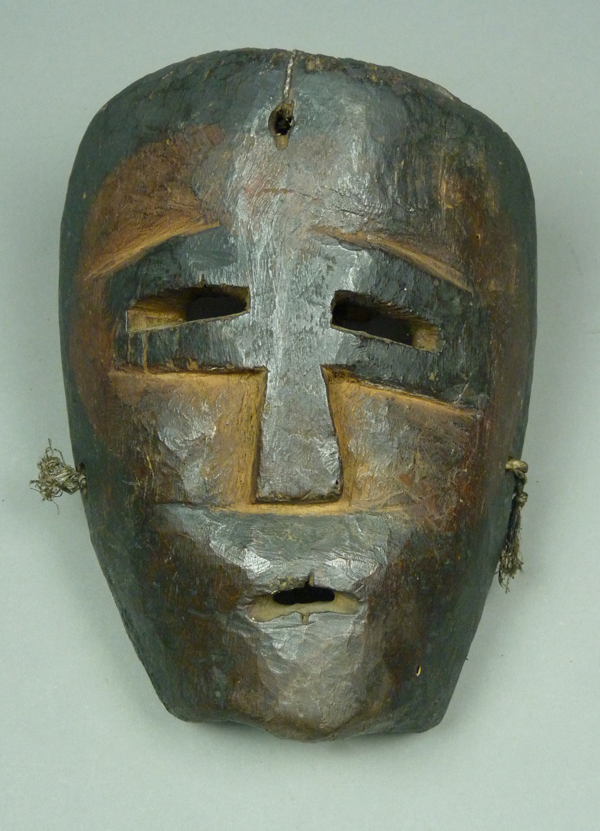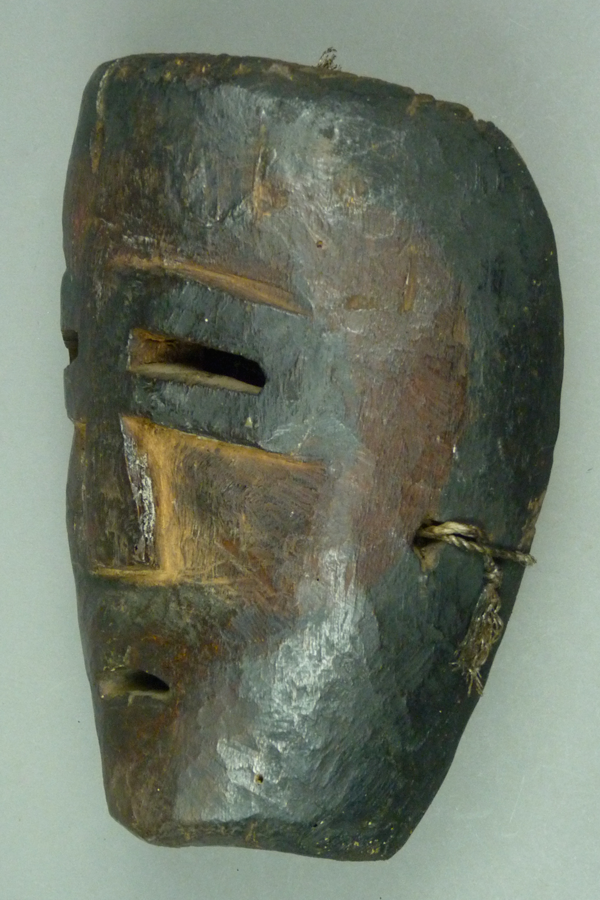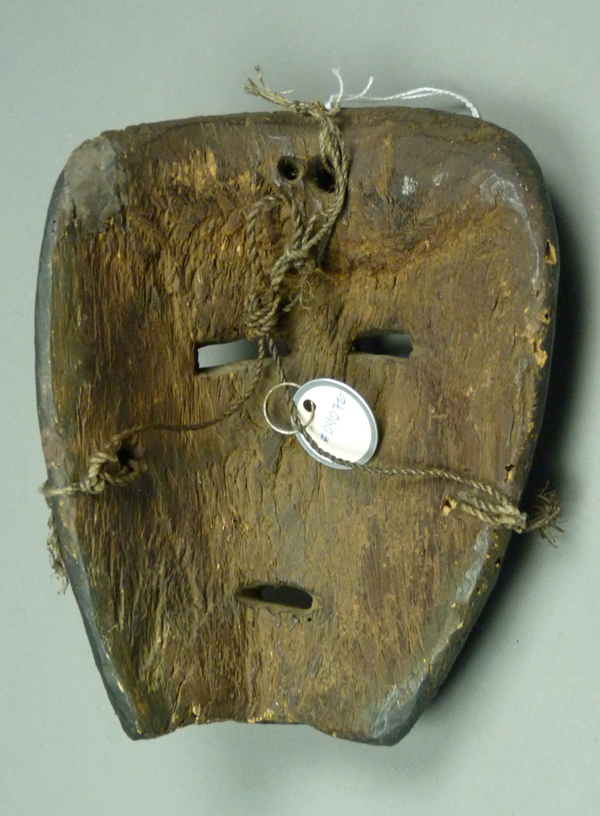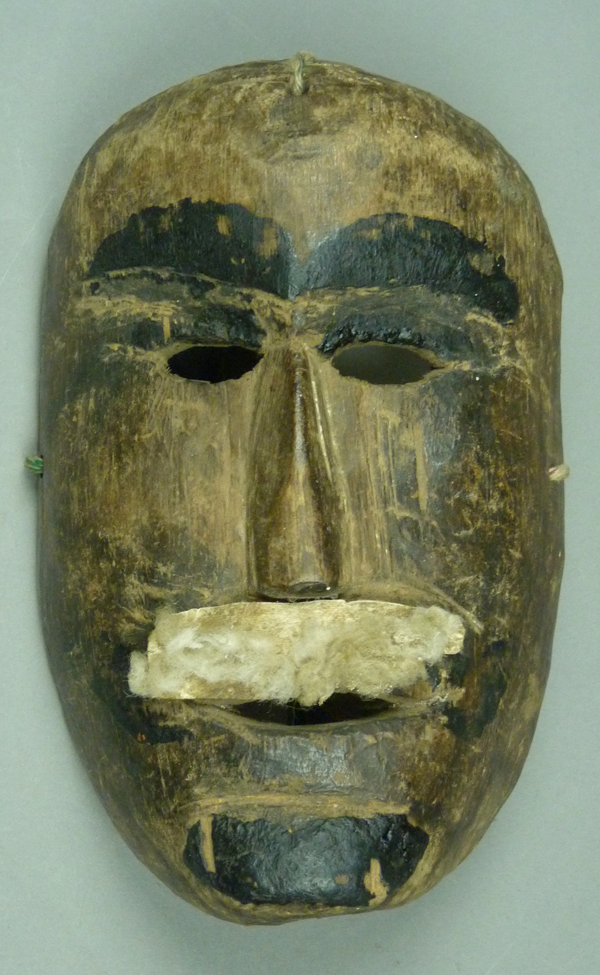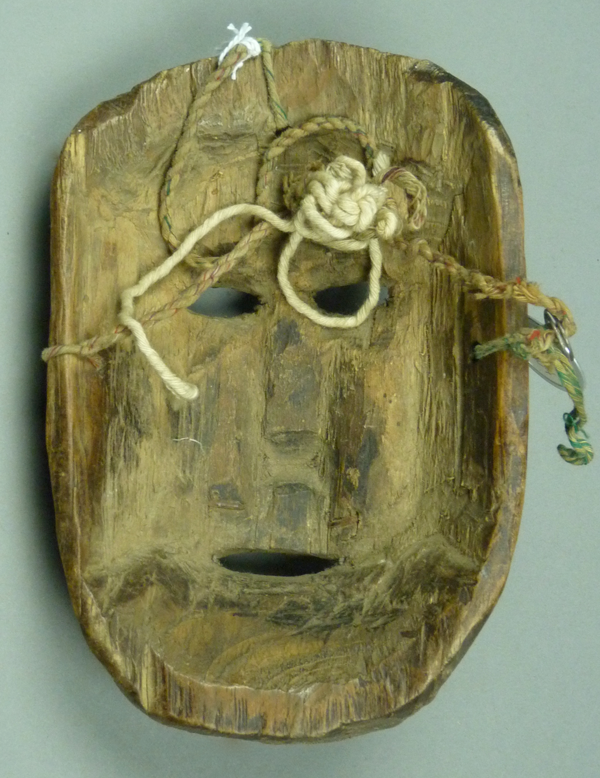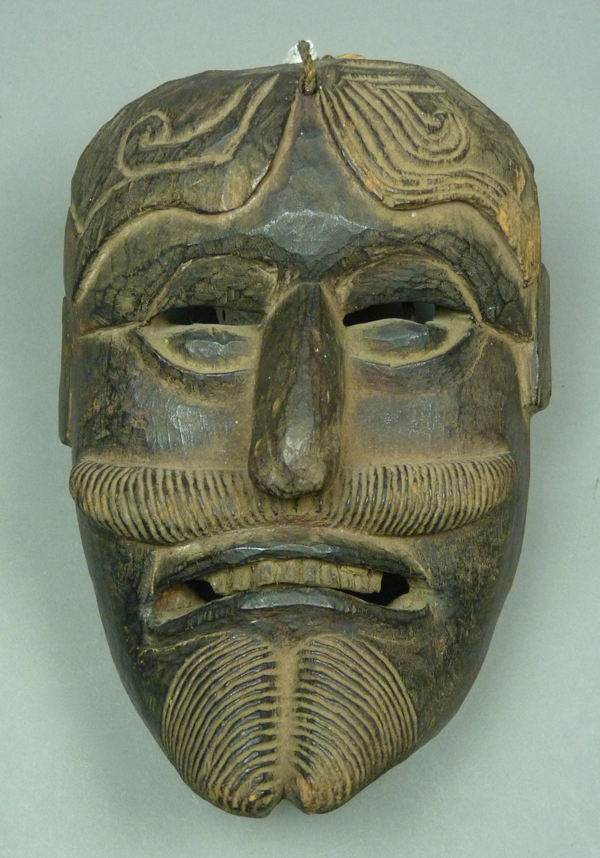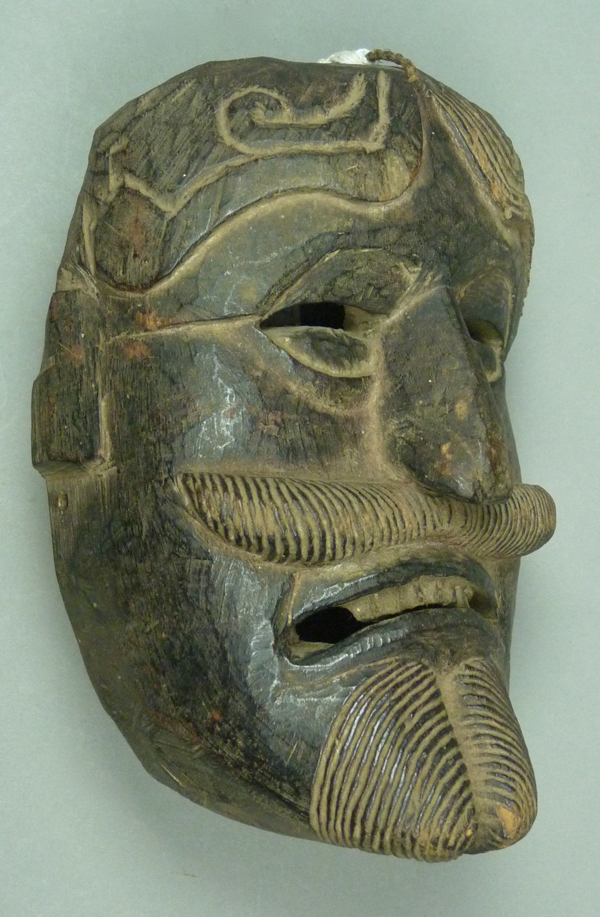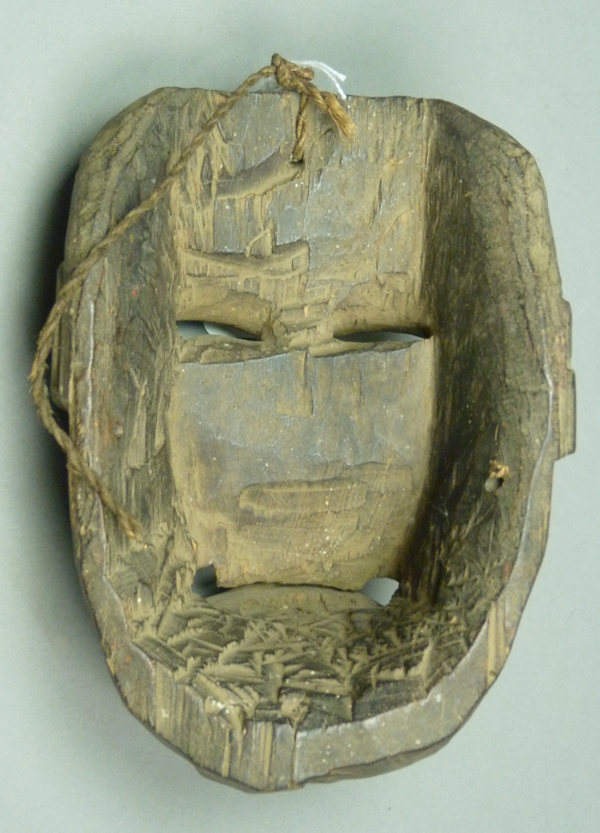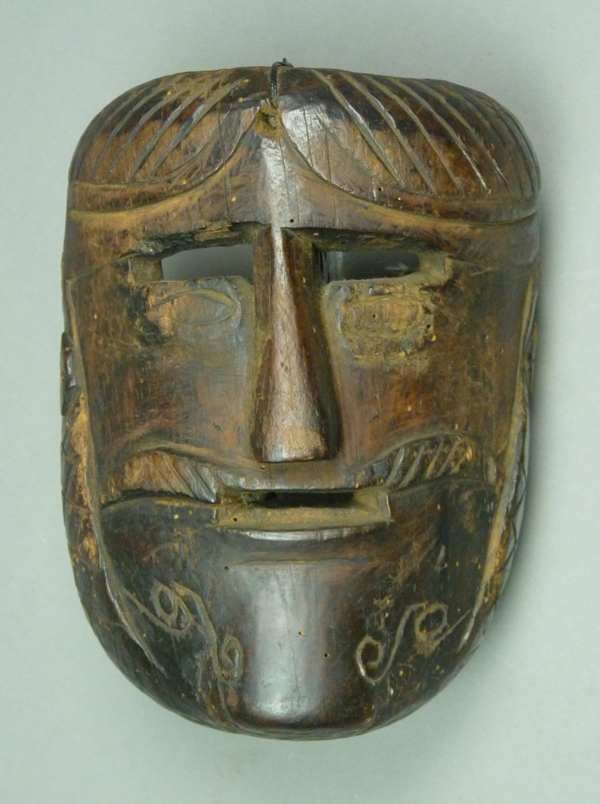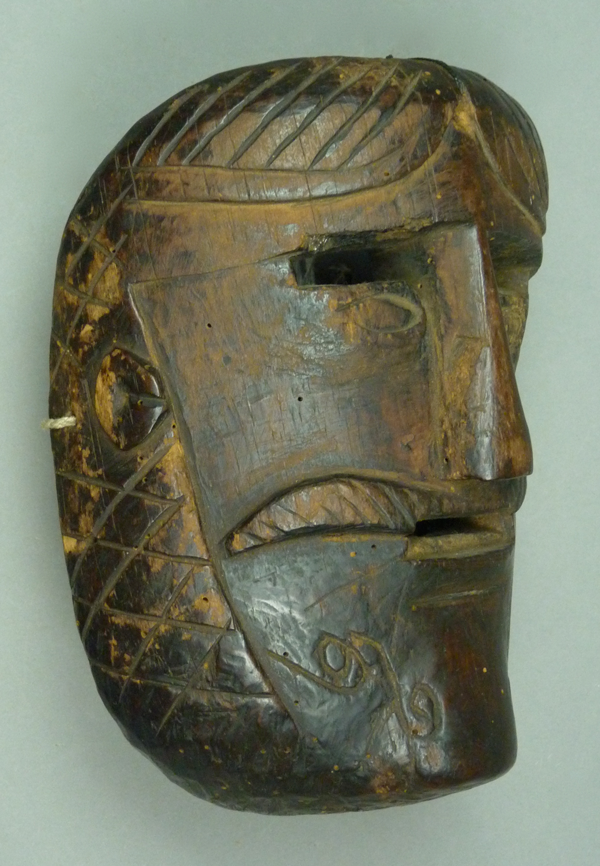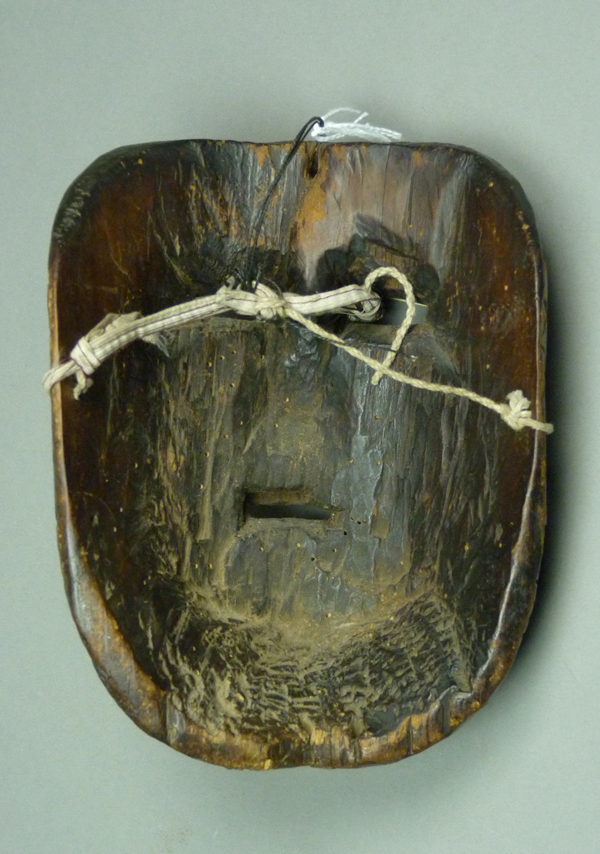This week we will examine masks that may have been worn by the Gracejos or Mox dancers in the Patzcar dance. According to Joel E. Brown (2008 Volume 1, page 251) the Quiché word Patzka’r means Gracejos in Spanish and Jokers in English. The dance is named for these characters. Each one carries a whip; in the end they whip one another. Here is a stained wooden mask like those from the area of Nahuala that does indeed look like a joker. I have no memory or record of this mask’s aquisition and I am simply speculating that it was used in the Patzcar dance. Actually I always think of it as a Jaguar mask at first glance, until I notice the human nose and the absence of fangs.
The extended tongue reinforces my suspicion that this is a Gracejo (joker). It is a striking and unusual mask.
Here is a side view of this mask. It is simply carved, with vision slits that double for the eyes. This mask is 9 inches tall, 7 inches wide, and 3½ inches deep.
The back seems heavily worn around the sides and the chin.
Here is a more serious looking face. This mask is carved from heavy wood. I really like the mustache. I bought this mask from Spencer Throckmorton in 1995.
This mask has lost its inlaid eyes. It measures 9 inches tall, 6 inches wide, and 4 inches deep.
There are relief carved ears of an interesting design.
There is evidence of heavy use.
The next mask is a particularly remarkable carving. At one time it must have had inlaid eyes under these dramatic lids. I bought this mask from the Cavin Morris Gallery in 1995.
This mask is 8 inches tall, 5½ inches wide, and 3 inches deep. I am uncertain about its gender.
This is another unusual face.
The crude carving of the back contrasts sharply with the delicate shaping of the face. The back of this mask was painted.
With its stylized features, the next mask seems dramatically different from all the rest. I bought this mask from Spencer Throckmorton in 1995.
This appears to be a mask of a face wearing a mask. Note the careful and unusual carving of the mouth.
This is another mask where the vision slits also serve as the mask’s eyes.
This mask is 7½ inches tall, 6 inches wide, and 3 inches deep.
This mask too has a very crudely carved back. There are some signs of an old infestation along the right edge.
The next mask is one that could have been used by a Gracejos or Mox dancer, yet it has one feature to suggest that it served in another dance—the hide mustache. In the second volume of Brown and Rossilli’s book (2008, pages 345 to 370) there is a description of the Mazate dance of Salamá, in which the dancers carry wild animal hides dangling from sticks. Most of the masks are painted black with white incised lines and red eyes, but some older examples appear to have been stained or never painted. The authors note that the “masks usually have tufts of horsehair or fur attached to them.”
This mask is has a very simple design.
It measures 7½ inches tall, 5 inches wide, and 2¼ inches in depth.
The back demonstrates staining from significant use.
The last two masks may have been carved for some other dance, yet it seems equally possible that they were worn by Gracejos or Mox dancers. They make one think of Moors, yet they are unpainted in the manner of Nahuala. Both of these are striking in terms of their design features and the quality of their carving. I bought this one from the Cavin Morris Gallery in 1995.
This mask has a grim sneer. The carving of the hair, mustache, and beard are dramatic. In contrast there are very simple relief carved ears. This mask came labeled as a Moro, but Brown (page 271) shows a less elaborately carved but frowning Gracejo mask. Elsewhere (page 2) that author comments that although it is popular to guess the identity of a mask from its appearance, the only certain evidence is to see the mask in a dance, because there is so much variability in Guatemalan traditional mask design and use.
I have never before seen a mask with such strange hair, so sketchy on one side and so detailed on the other. This mask is 7 inches tall, 5 inches wide, and 3 inches deep.
The back is crudely carved, old, worn, and dirty.
The last mask is also interesting and well carved. This is yet another mask that I bought from Spencer Throckmorton in 1995.
This mask has highly stylized sideburns, an unusual mustache, and tiny ears. The mouth is resolutely rectangular. Because unpainted, the mask would appear to be from Nahuala, but the features suggest the possibility of some other dance than Patzcar. This mask has sketchy hair on the chin, something like the hair on one side of the last mask.
This mask is 8 inches tall, 5½ inches wide, and 3¼ inches deep.
This back is very old.
Next week I will show Torito (bull) masks from the Guatemalan Toritos dance.

